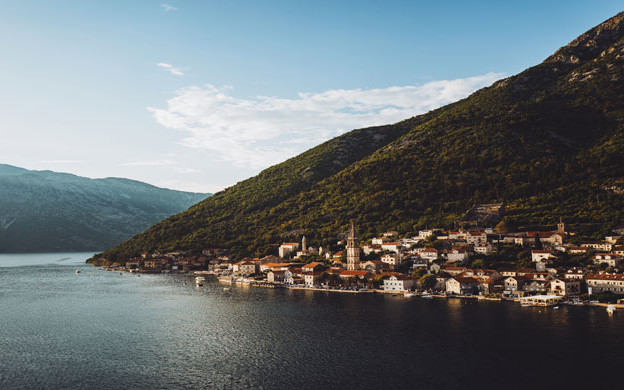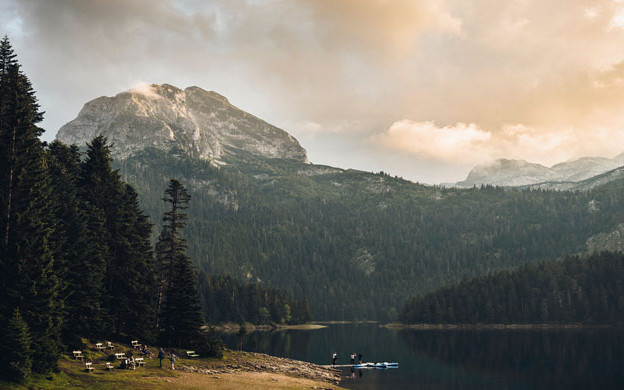Monténégro, joyau des Balkans à explorer
Découvrez Monténégro, un paradis entre mer et montagnes.
Entre plages dorées et sommets verdoyants, Monténégro vous attend.
Monténégro : Évasion entre nature intacte et culture riche
Si sur la carte ce pays apparaît bien petit, coincé entre l'Albanie, la Serbie, la Croatie et la Bosnie-Herzégovine, il n'en offre pas moins une étonnante variété de paysages. Pays de montagnes et de vallées encaissées, le Monténégro est une destination de choix pour les amoureux de nature et de randonnées. Sur une petite superficie s'étendent cinq parcs nationaux, des plages, un littoral découpé d'une beauté fascinante et des montagnes peu urbanisées. Le Monténégro possède aussi un patrimoine architectural d'une diversité insoupçonnée, fruit d'un chassé-croisé de royaumes et d'empires : Grecs, Romains, Turcs… Nombre de civilisations ont façonné ce pays. Pour découvrir au mieux le Monténégro, encore en plein essor au niveau touristique, une agence locale est un bon choix : des locaux expérimentés organiseront en direct avec vous le séjour sur mesure idéal pour découvrir toutes les facettes du Monténégro au cœur de son authenticité.
Un trésor caché des Balkans
Niché entre les montagnes et la mer Adriatique, ce pays enchanteur est un véritable joyau pour les amateurs de nature et de culture. Avec ses fjords spectaculaires, ses plages de sable fin et ses montagnes imposantes, chaque recoin est une invitation à l'évasion. Les férus d'histoire seront séduits par des forteresses médiévales et des monastères séculaires, témoins d'un riche passé.
Les amateurs de plein air trouveront leur bonheur dans les randonnées à travers des paysages époustouflants, tandis que la côte offre des eaux cristallines parfaites pour la baignade. Les villages pittoresques, avec leurs maisons en pierre et leurs traditions vivantes, offrent un aperçu authentique de la vie locale.
Expérimentez une gastronomie savoureuse où les influences méditerranéennes se mêlent aux saveurs balkaniques. Le Monténégro est une terre de contrastes où chaque visiteur découvre un aspect unique qui le charme irrémédiablement.

Les sites incontournables à découvrir
La vieille ville de Kotor est très pittoresque et semble figée dans le passé. Elle offre un décor d'antan, avec ses remparts, ses ruelles étroites, ses petites églises et ses monuments. C'est une véritable immersion culturelle monténégrine à ne pas manquer lors d'un séjour au Monténégro.
Situé entre le Monténégro et l'Albanie, le lac de Skadar est le plus grand lac des Balkans. Doté de paysages splendides, c'est aussi un parc national prisé par les oiseaux migrateurs. Côté Monténégro, il abrite des villages anciens à la tradition viticole et des monastères sur des îles. Faire une croisière permet de découvrir cet environnement exceptionnel.
D'une superficie de 39 000 hectares, le parc national de Durmitor est inscrit au Patrimoine mondial de l'UNESCO. Il possède plusieurs massifs culminant à plus de 2000 mètres et offre une vue superbe depuis ses sommets. Le lac noir, situé à 1450 mètres d'altitude et entouré de sapins, est le joyau de ce parc.

Découverte du Monténégro hors des sentiers battus
Le canyon de la Tara est très impressionnant avec des parois de 1300 m de haut. Cependant, c'est quand on est sur l'eau que la vue devient tout simplement époustouflante. C'est pourquoi une descente en rafting est une activité très appréciée par les visiteurs, d'autant plus que le parcours est accessible aux débutants.
Avec ses multiples palais et ses églises baroques, Perast est un petit village plein de charme. Traditionnellement, c'est un village de pêcheurs, comme en témoigne l'église Gospa od Škrpjela, située sur une petite île non loin de Perast. À l'intérieur, on peut admirer de nombreux ex-voto rapportés par des marins.
La péninsule de Luštica est un havre de paix à la nature préservée. Des oliveraies, de jolies criques et une magnifique vue sur les bouches de Kotor attendent les voyageurs. C'est l'idéal pour un séjour balnéaire au cœur de beaux paysages.
A website by
Customize your trips with Quotatrip and receive tailor-made offers directly in your inbox.
Discover a country
Copyright 2025 © Quotatrip.